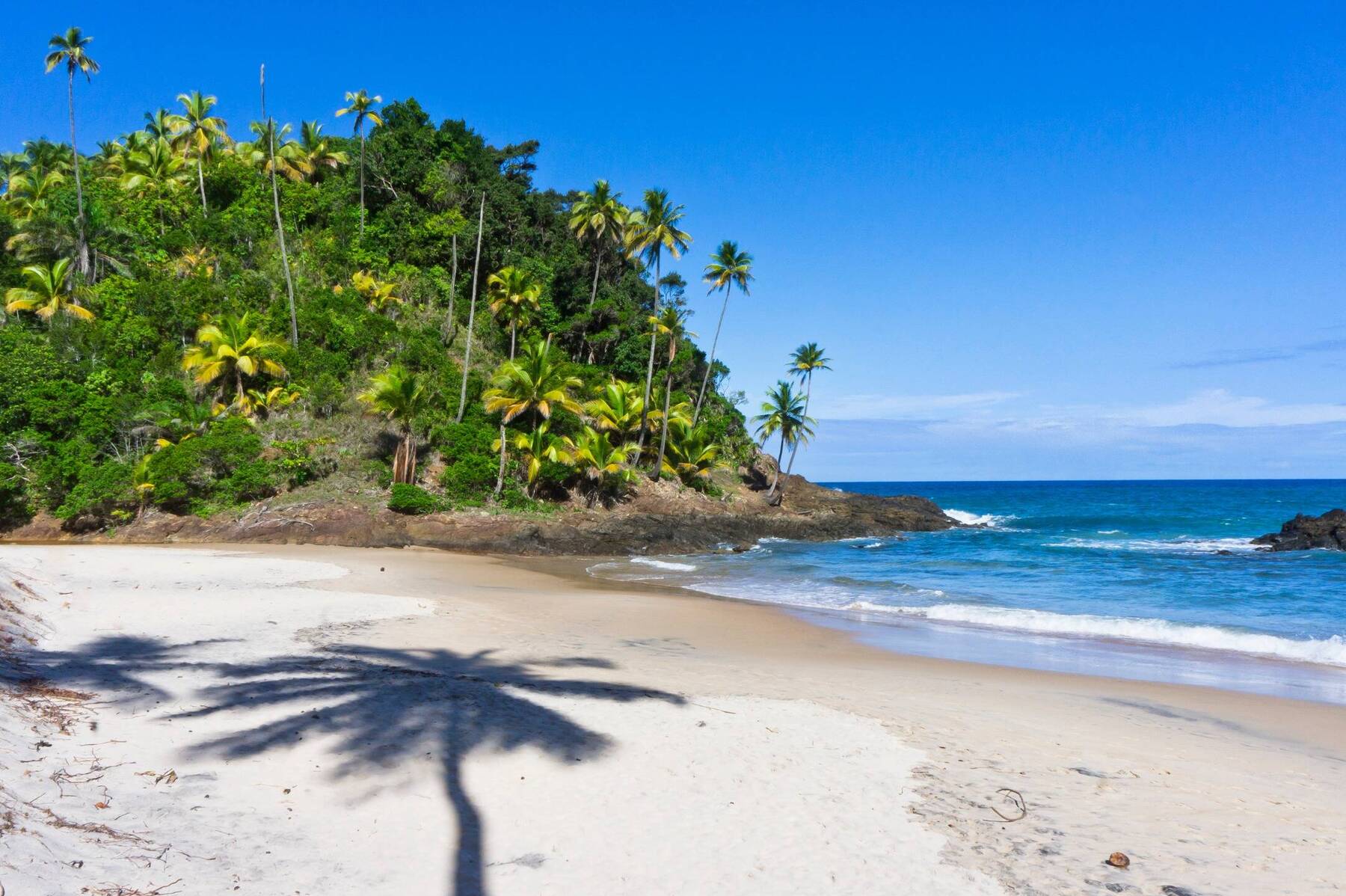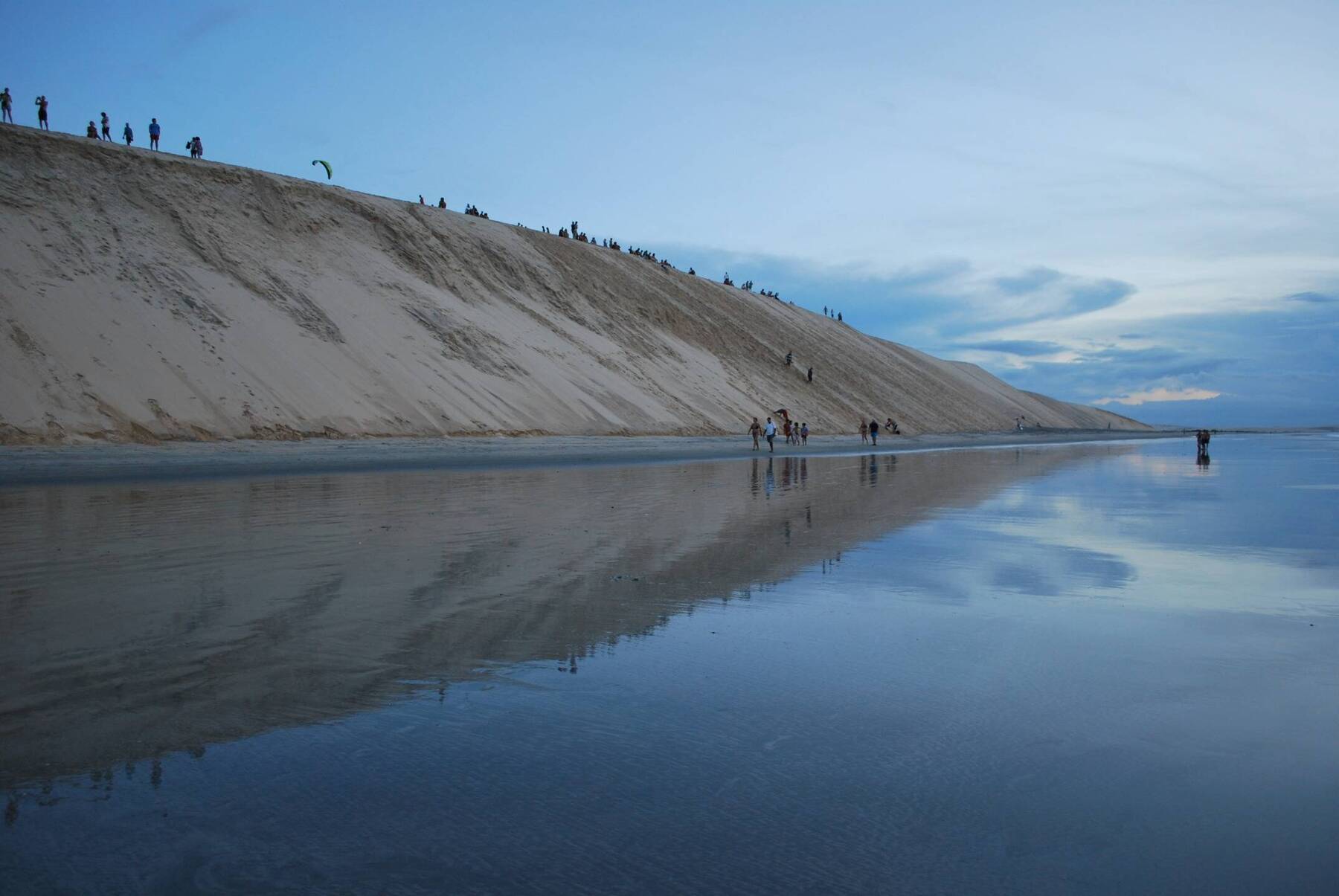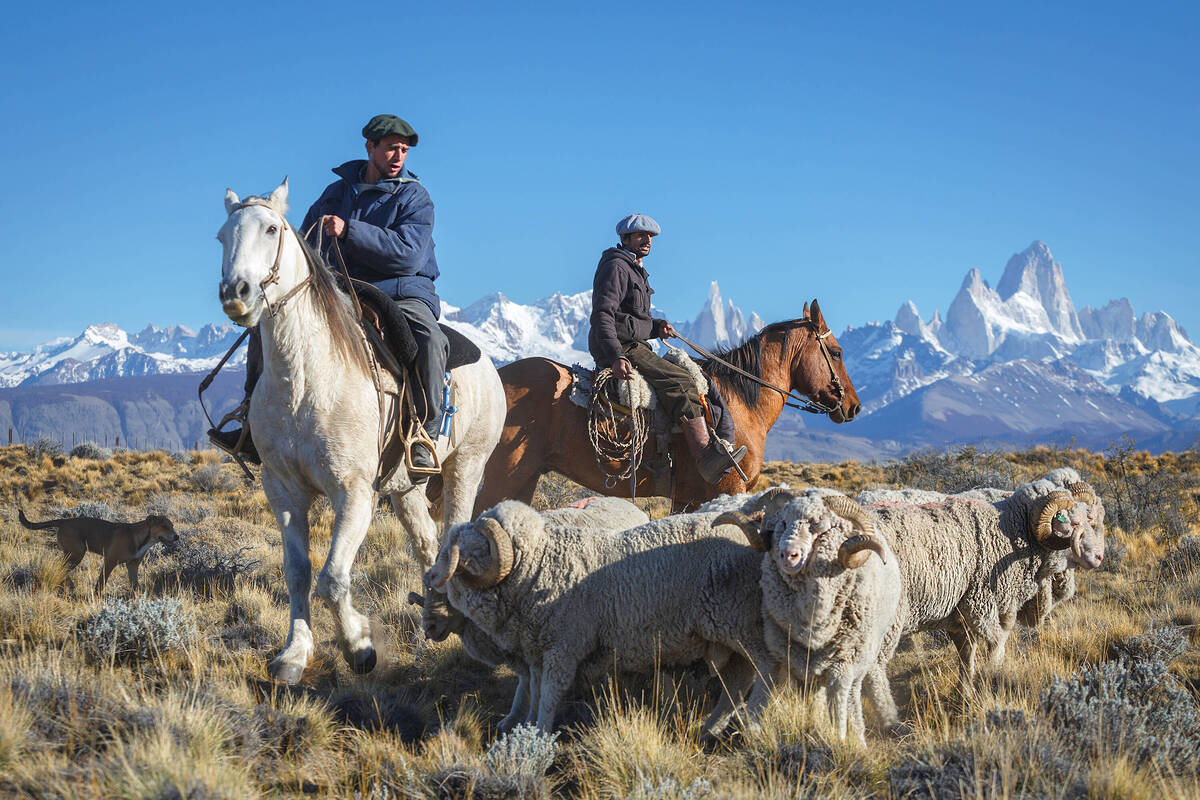See the Cliffs of Canoa Quebrada
Around 160km south of Fortaleza, Canoa Quebrada is located on the north-east coast. Once a small fishing village, the population is still only about 3000 but it’s been on the tourist map since the 1970s and become one of the most visited beaches in the region.
Down Broadway, the main, white and grey stone-paved thoroughfare, there are clothing shops (one with a floor of deep sand), supermarkets and lots of good restaurants. Broadway leads to cliffs which overlook the long coast and the Atlantic Ocean, and where paragliders can be rented and launched from.
On the beach, reached via stairs at regular intervals along the cliffside, the day can be spent on deckchairs nearby restaurants built on piles, high enough to walk under, with plastic tables and umbrellas set out on the sand. The symbol of Canoa Quebrada, a new moon and star, can be seen carved into the cliff.
Perhaps kite surf, or take a dune buggy which travels along pale golden sand beaches, stretching as far as the eye can see. Kilometres of cliffs, yellow, red, white, or layers of those colours, and the pink cliffs at Ponta Grossa, 40 kilometres south-east of Canoa Quebrada, extend along its length. The cliffs are spectacular with spots of lilac, orange, yellow, golden yellow and ochre red colours rippling and flowing into each other. White-sailed traditional fishing boats – jangada, like mini dhows – dot the shoreline and sea, brightly painted in greens, blues and yellows. Leaving the beach the buggies blat to the top of sand dunes for views of the forever coast. Stops are made for swimming and at Fontainha, where sculpted sand cliffs have been eroded away by a freshwater river forming stalagmite type formations.






















Comments